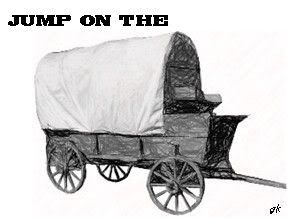The real-world-problem-solving folks think that to study real world problems, the students have to be deeply involved in an hour-long problem solving exercise! Or an all week problem solving exercise!!
The examples of short, real life problems, in this post, are proof that real life examples can be used and are used all the time in a traditional classroom. They are a much more efficient use of the students' time and cover examples that make sense to a student. In other words, students can see and understand how they would use a math procedure (division of fractions) that you are teaching.
Students can not only learn division of fractions in 5th grade, but they can also learn to identify when and how to use that procedure in real life. Here are some examples that make sense to children.
Remember, from my last post, that students are learning how to reword a division of fraction problem, without rewriting it. We want students to learn that for division, we are really trying to find "How many ___'s are in ___?" So we use 3 circle manipulatives for our first example. "There are 3 huge cookies. Each child will get 1/2 of a cookie. How many 1/2's will there be in 3 cookies?" I suggest that you also have fractional pieces for 1/2, 1/4, 1/3, etc., for the students to use. Have the students use the pieces to determine how many 1/2'a are in 3 cookies.
I suggest using whole numbers when introducing division of fractions. Repeat the same idea for a few more "whole cookie" problems. Or use stories for pizzas.
You can then progress to yards of rope or ribbon. "The boy scouts had 5 yards of rope. Each scout needs 1/2 yard of rope. How many 1/2 yards can the scouts get from their 5 yards of rope?" Or for the girls: Each girl needs 1/3 of a yard of ribbon for the project. If there are 6 yards of ribbon, how many 1/3 yards are there in the 6 yards of ribbon.
Using rope and ribbon examples are a little different in a child's mind, and a number line and small yardages are recommended for the first examples.
Back to the circular manipulatives, tape thirds and fourths together to form 2/3's and 3/4's. This can be done ahead of time by the teacher, or students can tape their own thirds and fourths together. Here is a real life problem: If you have 2/3 of a pizza, how many 1/6's are in that 2/3's? Write the problem on the board or overhead using the division sign and have the students reword the problem "How many 1/6's are in 2/3?" Have the students use their fraction manipulatives to solve.
As students work over several days, they will become very quick to reword the problem, and will be able to use fractional manipulatives to demonstrate.
Notice that you are teaching children what division of fractions looks like in real life. This is before we even present the procedure of using the reciprocal to solve the problem.
Fraction rods can be used as manipulatives for teaching division of fractions. Also useful is a product called "Fraction Tiles in a Tray"
Be creative with your real-life stories, and there are so many things in real life that students can relate to. Stories of dividing fruit (apples, oranges) are every day events in my family. There are ample opportunities for homeschooling parents or for parents who are trying to help their child understand and catch up with the concept of division of fractions. If you have 1/2 of a cantaloupe, it's so easy to just discuss "how many1/4's are in this half of a cantaloupe?" If your student catch on quickly, go on to use 1/8's and 1/10's when using 1/2 of a cantaloupe.
Then as students progress to use the reciprocal, to invert the fraction and to multiply to solve the problem, there are different real-life problems which students are now ready for. Here are some examples.
Mother needs 3/4's of a yard of ribbon to make a bow. If she has 16 yards of ribbon, how many bows can she make. Discuss this problem with students. "What are we trying to find?" We are trying to find "how many _ _ _ are in _ _ _?"
It may be helpful at first to start them with the incomplete question, but most students will be able to ask the question because they have learned to recognize what it is that we are trying to find and they will be able to reword the problem. If it were my classroom, I'd have each student write the problem (16 divided by 3/4) and have students read the question out loud, maybe even write the question "How many 3/4's are in 16?" Yes, I know this is writing, but we are not using volumes of paper here, nor are we using an hour per problem. We are practicing and training the brain to think "How many _ _ _ are in _ _ _?"
Yes, 5th graders can learn to divide fractions and they can "see" it and they can understand examples in real life when they need to use division of fractions to solve the problem. Your student is smarter than the "fuzzy math" people think. If your student is struggling to understand, I promise you that your student wants to understand. So, take some time, invest some time, in helping him/her. Practice at home with them -- set aside 15-30 minutes a day to practice on this. They can get it. It's like finally understanding long division! It's liberating!





